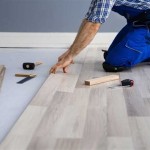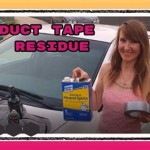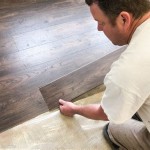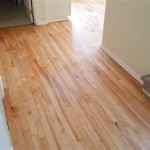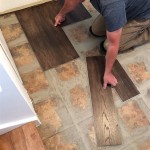How To Remove Glued Carpet From Hardwood Floors
The task of removing glued carpet from hardwood floors presents a significant challenge for many homeowners. The adhesive used to secure the carpet can bond strongly to the wood surface, making removal difficult and potentially damaging the flooring beneath. This article outlines a comprehensive approach to safely and effectively remove glued carpet, minimizing the risk of damage and restoring the hardwood to its original state.
The process involves several stages, including preparation, softening the adhesive, removing the carpet and adhesive residue, and finally, cleaning and refinishing the hardwood surface. The time and effort required can vary depending on the type of adhesive used, the age of the installation, and the type of hardwood flooring. It's crucial to proceed with patience and care to achieve the desired results.
Preparing for Carpet Removal
Before starting the physical removal process, it is essential to adequately prepare the work area. This involves several steps to protect both the individual performing the work and the surrounding environment. The goal is to minimize mess, prevent injury, and ensure that the cleaning process can be completed efficiently.
The initial step involves clearing the room of all furniture and obstructions. This provides ample workspace and prevents accidental damage to furniture during the removal process. Any remaining items should be covered with drop cloths to protect them from debris and adhesive residue.
Protective gear is paramount to prevent injury. Safety glasses are crucial to shield the eyes from flying debris and adhesive fragments. Heavy-duty work gloves will protect the hands from cuts, scrapes, and chemical irritants present in some adhesive removers. A dust mask or respirator is recommended to avoid inhaling dust and potentially harmful adhesive vapors.
Adequate ventilation is also crucial, especially when using chemical adhesive removers. Open windows and doors to allow fresh air to circulate throughout the room. Consider using fans to improve airflow and further disperse any fumes. If ventilation is limited, a respirator with appropriate filters is strongly recommended.
Finally, prepare the tools and materials needed for the removal process. Having everything readily available will save time and effort and streamline the entire project. This includes: a utility knife, a pry bar, a scraper (both wide and narrow), adhesive remover (appropriate for hardwood floors), plastic sheeting, a heat gun (optional), mineral spirits or other appropriate solvent, clean cloths, a vacuum cleaner, and floor cleaner specifically designed for hardwood.
Softening the Adhesive
The key to successful glued carpet removal lies in effectively softening the adhesive bond between the carpet and the hardwood floor. There are several methods that can achieve this, each with its advantages and disadvantages. The choice of method depends on the type of adhesive used, the size of the area to be treated, and personal preference.
One common method involves using heat. A heat gun, carefully applied, can soften the adhesive, making it easier to peel away the carpet. The heat gun should be used with caution, keeping it moving and avoiding prolonged exposure to a single area to prevent scorching or damaging the hardwood floor. It's crucial to test a small, inconspicuous area first to ensure the heat does not discolor or damage the wood finish. The heat gun should be held several inches from the surface, and the heat should be applied in a sweeping motion. After heating a small section, attempt to lift the carpet using a pry bar or scraper.
Another approach involves using a commercial adhesive remover specifically designed for hardwood floors. These removers typically contain solvents that dissolve or weaken the adhesive bond. It's crucial to choose a product that is compatible with hardwood and will not damage the finish or stain the wood. Always read and follow the manufacturer's instructions carefully. Before applying the adhesive remover to a large area, test it on a small, inconspicuous spot to ensure it doesn't cause discoloration or damage. Apply the remover liberally to the carpet and allow it to dwell for the recommended time, typically 15-30 minutes, to allow the adhesive to soften. Then, attempt to peel back the carpet.
Alternatively, a steam cleaner can be used to soften the adhesive. The steam penetrates the carpet and helps to loosen the adhesive bond. Similar to the heat gun, it's essential to use the steam cleaner cautiously and avoid prolonged exposure to a single area of the hardwood to prevent damage. After steaming a section, immediately try to lift the carpet. This method is often effective for water-based adhesives but might be less effective for solvent-based adhesives.
Plastic sheeting can also be used in conjunction with heat or adhesive remover. After applying the chosen softening agent, cover the treated area with plastic sheeting. This helps to trap the heat or solvent, allowing it to penetrate the adhesive more effectively. Leave the plastic in place for several hours or overnight, depending on the severity of the adhesion. This can significantly improve the ease of carpet removal.
Removing the Carpet and Adhesive Residue
Once the adhesive has been adequately softened, the next step involves physically removing the carpet and the remaining adhesive residue. This is often the most labor-intensive part of the process and requires patience and persistence. Using the right tools and techniques will minimize the risk of damaging the hardwood floor.
Begin by using a utility knife to score the carpet into manageable strips, typically a few feet wide. This makes it easier to peel back the carpet sections. Start at a corner of the room and use a pry bar or scraper to lift the edge of the carpet. Gradually peel back the carpet, working along the scored lines. If the carpet is still strongly adhered in certain areas, reapply heat or adhesive remover and allow it to dwell for longer before attempting to lift the carpet again.
After removing the carpet, a significant amount of adhesive residue will likely remain on the hardwood floor. This residue must be removed before the floor can be cleaned and refinished. The method used to remove the adhesive residue will depend on the type of adhesive and the condition of the hardwood floor.
For relatively soft adhesive residue, a plastic scraper can be used to gently scrape away the remaining adhesive. Hold the scraper at a low angle and apply consistent pressure to avoid gouging or scratching the hardwood. Work in small sections, overlapping each pass to ensure that all the residue is removed. A wide scraper can be used for larger areas, while a narrow scraper is helpful for removing adhesive from corners and edges.
For more stubborn adhesive residue, mineral spirits or another appropriate solvent may be necessary. Apply the solvent to a clean cloth and gently rub the adhesive residue. Allow the solvent to dwell for a few minutes to soften the adhesive, then use the plastic scraper to remove the residue. Repeat this process as necessary until all the adhesive is removed. Be sure to use adequate ventilation when working with solvents and wear appropriate protective gear.
In some cases, a specialized adhesive remover designed for residue removal may be required. These removers are typically stronger than those used for softening the initial adhesive bond and may contain more aggressive solvents. Always test the remover on a small, inconspicuous area of the hardwood floor before applying it to a larger area. Follow the manufacturer’s instructions carefully and ensure adequate ventilation.
Once the majority of the adhesive residue has been removed, use a floor cleaner specifically designed for hardwood floors to clean the surface. This will remove any remaining solvent residue and prepare the floor for refinishing. Follow the manufacturer’s instructions for the floor cleaner and use a clean cloth or mop to apply the cleaner.
Finally, vacuum the floor thoroughly to remove any remaining debris and dirt. This will ensure that the surface is clean and ready for refinishing. Inspect the floor carefully for any remaining adhesive residue and remove it as needed. The floor should be completely clean and smooth before proceeding with the refinishing process.

Flooring How Can I Remove Carpet Adhesive From Hardwood Floors Home Improvement Stack Exchange

Removing Glue Or Adhesive From Hardwood Floors The Speckled Goat

How To Remove Carpet Glue From Hardwood Floors Servicewhale

Removing Glue Or Adhesive From Hardwood Floors The Speckled Goat

How To Remove Carpet Glue Goo Gone

How To Remove Carpet Glue From Wood Concrete Floors Ultimate Diy Guide

How And Not To Remove Carpet Padding From Hardwood Floors Accidentally Green

3 Fast Easy Ways To Remove Carpet Glue From A Wood Floor

Removing Carpet Glue Off Wood With Cooking Oil I Tried It And Let Soak For About 10 Minutes Did All Of This In A Half Hour No Harsh Chemicals

How To Remove Glue From Wood Floors Pete S
See Also
